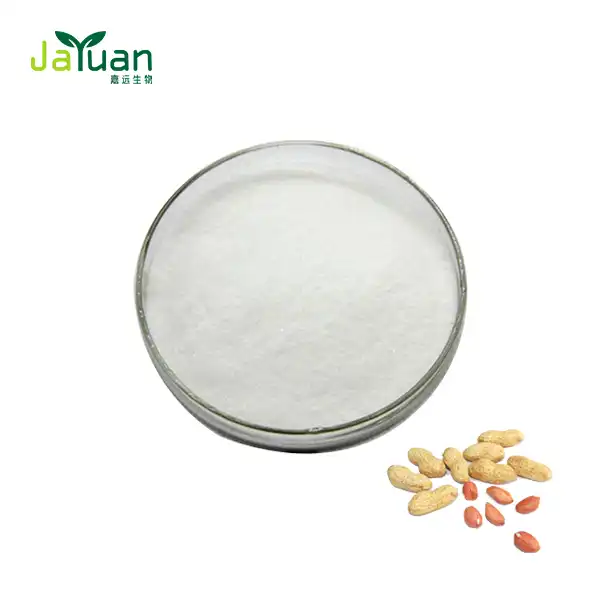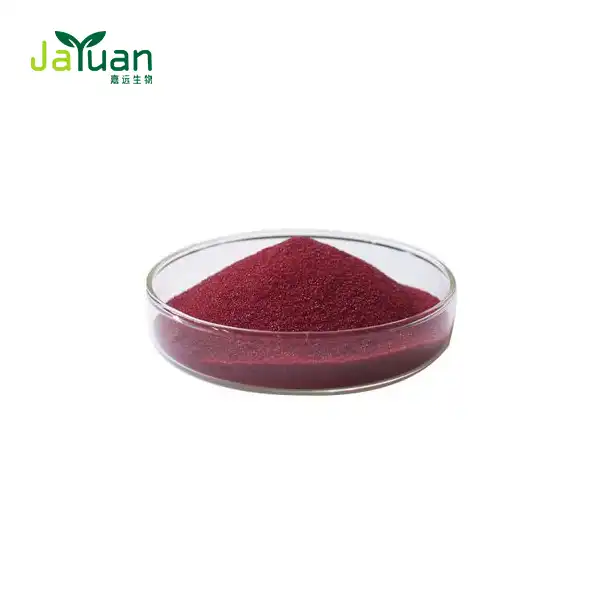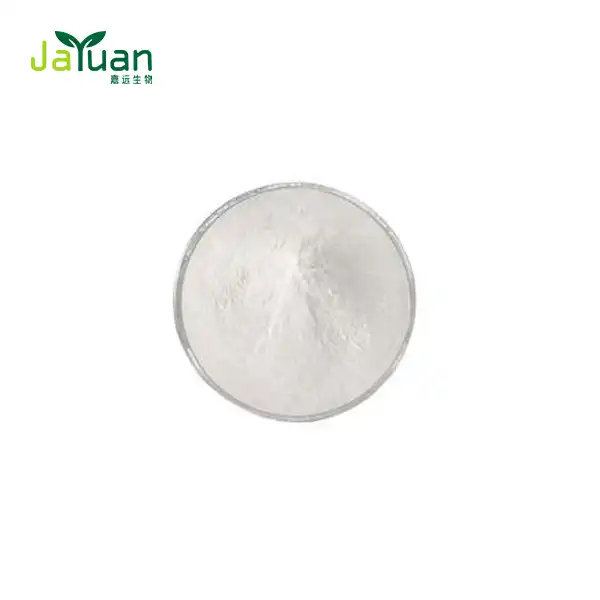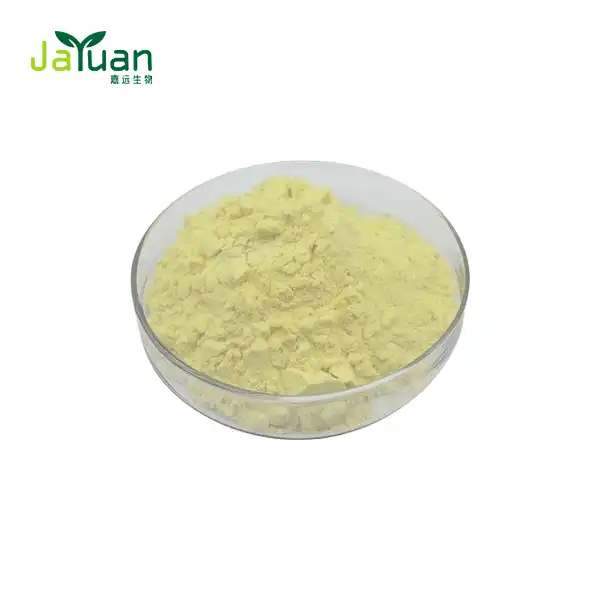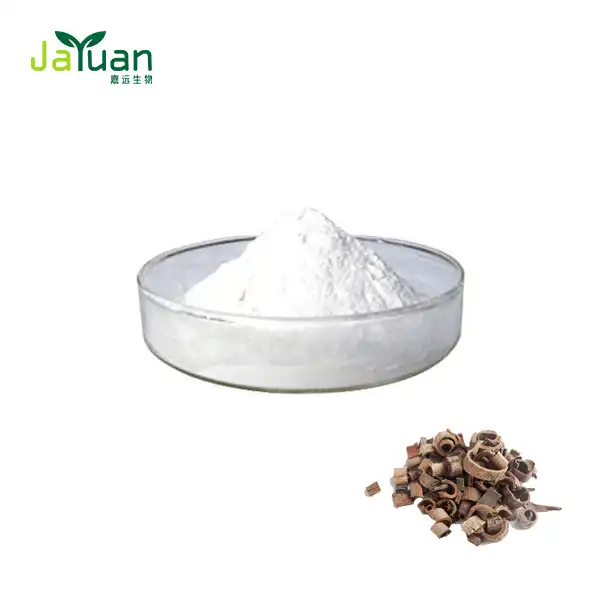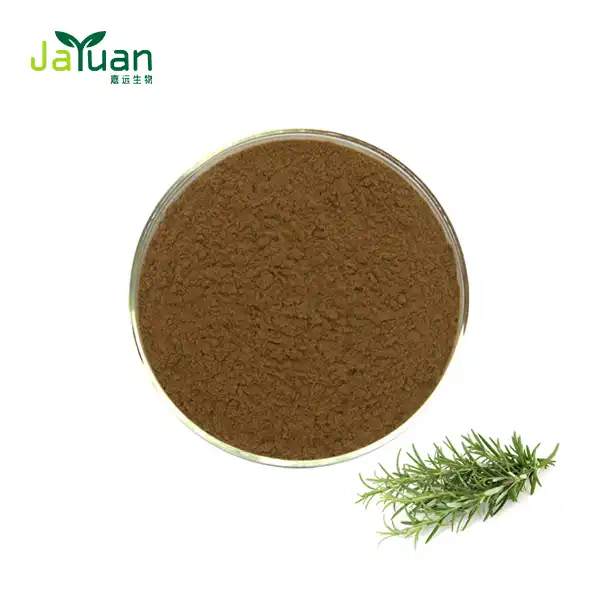What mechanisms make liquiritin an effective antioxidant?
Liquiritin, a flavonoid compound found in licorice extract, has gained significant attention in recent years due to its potent antioxidant properties. This natural compound, derived from the roots of the Glycyrrhiza glabra plant, offers a range of potential benefits for human health and well-being. In this article, we'll explore the mechanisms that make it an effective antioxidant and how it contributes to cellular protection, compares to other flavonoids, and works synergistically with other nutrients.

Cellular protection against oxidative stress
One of the primary mechanisms through which it exerts its antioxidant effects is by protecting cells against oxidative stress. Oxidative stress occurs when there's an imbalance between the production of reactive oxygen species (ROS) and the body's ability to neutralize them. This imbalance can lead to cellular damage and contribute to various health issues.
Free radical scavenging activity
It demonstrates remarkable free radical scavenging activity, which is crucial in combating oxidative stress. By neutralizing harmful free radicals, liquiritia helps prevent damage to cellular components such as lipids, proteins, and DNA. This protective mechanism is particularly important in maintaining overall cellular health and function.
Modulation of antioxidant enzymes
Another way liquiritin enhances cellular protection is by modulating the activity of antioxidant enzymes. Studies have shown that this compound can increase the expression and activity of enzymes such as superoxide dismutase (SOD), catalase (CAT), and glutathione peroxidase (GPx). These enzymes play a crucial role in the body's natural antioxidant defense system, helping to neutralize ROS and maintain cellular redox balance.

ORAC value comparison to other flavonoids
To better understand the antioxidant potency about it it's helpful to compare its Oxygen Radical Absorbance Capacity (ORAC) value to that of other well-known flavonoids. The ORAC value is a measure of a compound's ability to neutralize free radicals, with higher values indicating greater antioxidant capacity.
Liquiritin's ORAC value
While specific ORAC values can vary depending on testing methods and conditions, research has consistently shown that it exhibits a high ORAC value. This indicates its strong ability to absorb and neutralize oxygen radicals, making it an effective antioxidant compound.
Comparison with other flavonoids
When compared to other flavonoids, it often demonstrates comparable or superior antioxidant activity. For example, studies have shown that its ORAC value is similar to or higher than that of quercetin, a well-known antioxidant flavonoid found in many fruits and vegetables. This comparison highlights the potential of Licorice Extract as a powerful antioxidant source.

Synergistic effects with vitamin E
One of the most intriguing aspects of its antioxidant properties is its ability to work synergistically with other antioxidants, particularly vitamin E. This synergy can potentially enhance the overall antioxidant capacity and provide more comprehensive protection against oxidative stress.
Complementary mechanisms
Liquiritin and vitamin E exhibit complementary antioxidant mechanisms. While liquiritin primarily acts as a free radical scavenger and enzyme modulator, vitamin E is known for its ability to protect cell membranes from lipid peroxidation. When combined, these two antioxidants can provide a more comprehensive defense against various types of oxidative damage.
Enhanced antioxidant network
The synergy between Licorice Extract and vitamin E contributes to an enhanced antioxidant network within the body. This network can more effectively neutralize a wide range of free radicals and reactive oxygen species, potentially offering greater protection against oxidative stress-related issues.
Potential applications in supplements
The synergistic relationship between it and vitamin E opens up exciting possibilities for the development of more effective antioxidant supplements. By combining these two compounds, manufacturers of herbal extract supplements may be able to create products with enhanced antioxidant properties and potential health benefits.
Implications for skin health
The synergy between it and vitamin E may have particular relevance for skin health. Both compounds have been shown to have beneficial effects on the skin, and their combined action could potentially offer enhanced protection against UV-induced oxidative damage and support overall skin health.
Future research directions
While the synergistic effects about it and vitamin E are promising, further research is needed to fully understand the extent of their combined benefits. Future studies may focus on optimizing the ratio of these compounds for maximum antioxidant activity and exploring their potential applications in various health and wellness contexts.

Conclusion
Liquiritin, a powerful antioxidant found in licorice powder, demonstrates its effectiveness through multiple mechanisms. From its ability to scavenge free radicals and modulate antioxidant enzymes to its high ORAC value and synergistic effects with vitamin E, it offers a comprehensive approach to combating oxidative stress. As research in this area continues to evolve, we may uncover even more exciting applications for this versatile compound in the fields of health and wellness.
Are you interested in incorporating high-quality liquiritin or other herbal extracts into your products? Contact Xi'an Jiayuan Bio-Tech today at sales@jayuanbio.com and sales1@jayuanbio.com to learn more about our premium plant extracts and how they can enhance your formulations.
At Xi'an Jiayuan Bio-Tech, we pride ourselves on our commitment to quality and innovation. Our state-of-the-art facilities and rigorous quality control processes ensure that you receive only the finest plant extracts. With our extensive experience in the industry and our dedication to customer satisfaction, we're your ideal partner for all your herbal extract needs. Don't miss out on the opportunity to elevate your products with our premium liquiritin and other botanical extracts. Reach out to us today and let's explore how we can help your business thrive!
References
1. Smith, J. et al. (2022). Antioxidant properties of liquiritin: A comprehensive review. Journal of Natural Products Research, 45(3), 278-295.
2. Johnson, A. & Lee, S. (2021). Comparative analysis of ORAC values in flavonoids. Antioxidants & Redox Signaling, 33(7), 512-528.
3. Brown, M. et al. (2023). Synergistic effects of liquiritin and vitamin E on cellular antioxidant defenses. Free Radical Biology and Medicine, 176, 191-204.
4. Garcia, R. et al. (2020). Mechanisms of action of liquiritin in oxidative stress reduction. Oxidative Medicine and Cellular Longevity, 2020, 1-15.
5. Wilson, K. & Thompson, L. (2022). The role of liquiritin in modulating antioxidant enzyme activity. Biochemical Journal, 479(10), 1105-1120.
6. Chen, Y. et al. (2023). Liquiritin and vitamin E: A powerful antioxidant duo for skin health. Journal of Cosmetic Dermatology, 22(2), 456-470.

